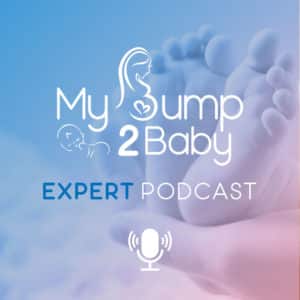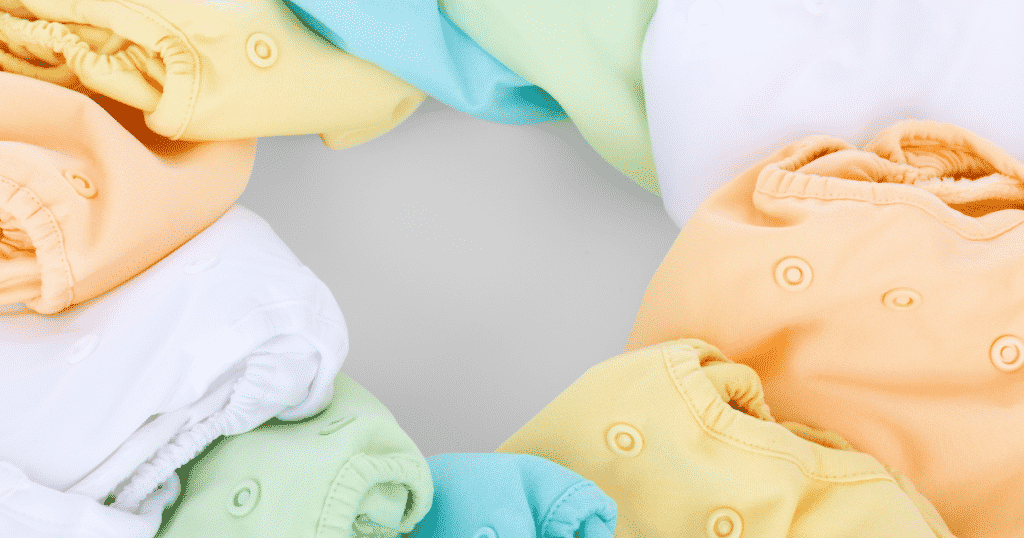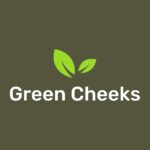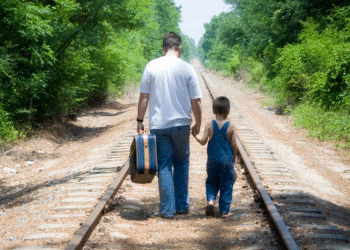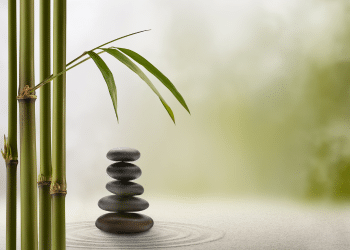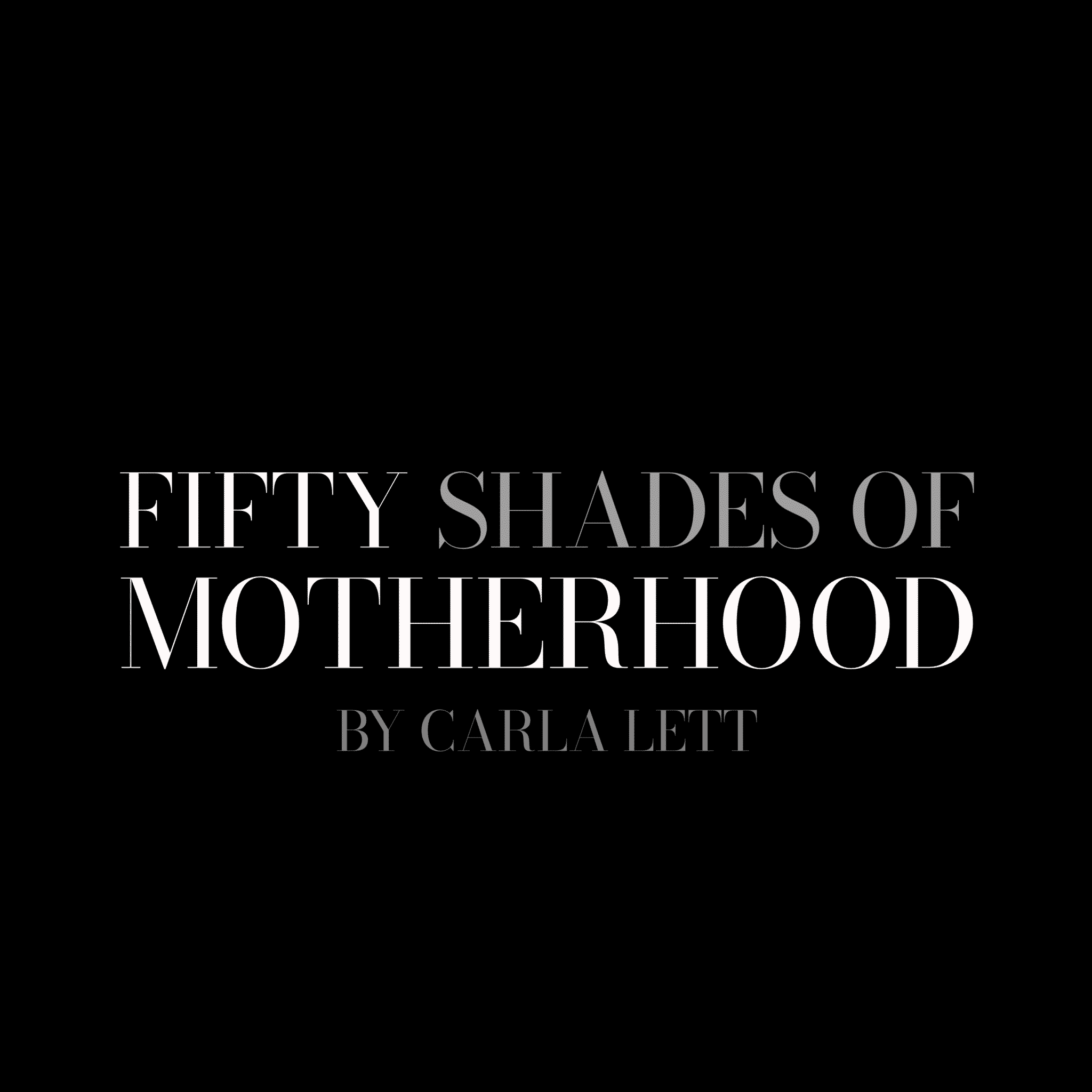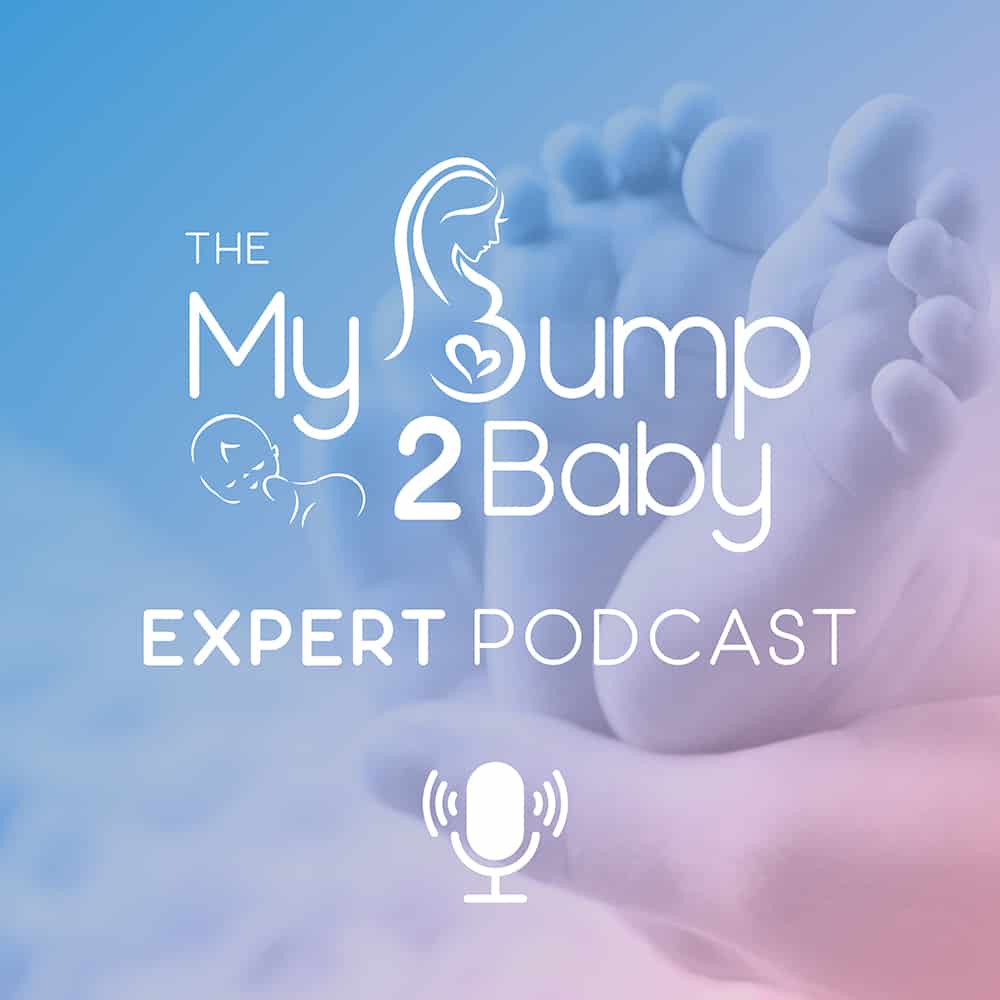- The Benefits of Cloth Nappies
Today Carla speaks with Lianne from Green Cheeks about cloth nappies. Lianne answers all of our burning questions about cloth nappies including; What cloth nappies are, when you can start using them, how many you need to get started, the benefits of cloth nappies, how to wash cloth nappies and how often they need to be changed.
[00:00:00] Carla: This podcast is sponsored by My Bump 2 Baby family protection and legal directory. To find your nearest advisor or family law, solicitor, head over to www.mybump2baby.com/familyprotectionlegal
[00:00:29] Hello and welcome to My Bump 2 Baby Expert Podcast, where we bring experts from all over the UK. To answer your questions on everything pregnancy to preschool
[00:00:52] Today we invite on Lianne Stevenson from Green Cheeks Cloth Nappies, and Lianne is going to be answering all of our questions about what cloth nappies. I hope you enjoy this episode.
[00:01:08] Hello everybody. And welcome to My Bump 2 Baby’s Expert Podcast. Today I am joined by the lovely Lianne Stevenson, the owner of Green Cheeks Cloth Nappies. Hi Lianne how are you?
[00:01:23] Lianne: I’m fine. Thank you. How are you?
[00:01:25] Carla: I’m good thank you. It’s actually quite sunny outside. So I’m quite happy today.
[00:01:29] Lianne: Yeah, rogue sunny day.
[00:01:32] Carla: Exactly. In October. It’s quite a nice, nice, a nice thing to wake up to. So we’re going to be today talking all around cloth nappies. Cause I know a lot of parents are curious, but they’re just not quite sure of the process. I mean, I am definitely one of those parents, so, um, so I’ve got a few questions that, um, other people have sent in. So are we okay to get started with those?
[00:01:59] Lianne: Absolutely.
[00:02:00] Carla: Perfect. So Lianne, first of all, tell us what cloth nappies actually are?
[00:02:07] Lianne: So a cloth nappy is a nappy that you don’t throw away. So it is a reusable nappy. Um, there are literally hundreds of different brands and probably 10 different types of cloth nappy that are out there in existence. But the principles all the same, it’s some sort of absorbent fabric, with a waterproof layer on the outside, is the gist of it, um, so nappy changing time, rather than bagging it up and throwing it away, you will store it in a bag or a bucket and wash it and start over again.
[00:02:42] Carla: So it’s definitely more eco-friendly to do it that way.
[00:02:45] Lianne: Absolutely.
[00:02:46] Carla: So in terms of cloth nappies, when can you actually start using them? Would you use them from birth or would you wait a little while?
[00:02:54] Lianne: So personally, I waited a while. I started that about eight weeks. Um, well, first time, new mum, absolutely clueless about motherhood in general. Getting into breastfeeding? So, um, I would say if you, especially, if you’re a first time, mum, give yourself a break, like get used to all the other stuff first, before putting this extra pressure on yourself. You can do cloth nappies from birth. Most cloth nappies are called birth to potty. So the idea is they will take you from birth to potty-training because they adjust in size as your baby gets bigger.
[00:03:34] Um, but they only really work on bigger babies in the first place. So your sort of nine, 10 pounders. Um, you can buy special newborn cloth nappies, but then that’s a whole second set of nappies that you’ve had to buy, which you’ll use for about three months.
[00:03:49] Carla: Yeah, definitely. No, that makes sense
[00:03:52] Lianne: It can be done, but it’s an extra cost. And can be a bit stressful.
[00:03:57] Carla: And I like how you said that about the pressure, because I think has a new mum when you first have a baby, there is so much pressure around you and when things don’t work out, you can sometimes feel like, oh, I’ve failed at that. You haven’t , you have had a baby.
[00:04:12] Lianne: Yeah. It’s hard having a baby, especially your first baby is hard. Everything is new to get used to. So if I l was you as a first time mum, I would leave it a couple of weeks. Spend some time when you’ve got a baby asleep on your shoulder, spend some time doing some research, look online, look at forums, look at Facebook groups. Learn what you can learn about it, because it is a bit different to disposables. There is a bit more to get your head around. Once you’ve got it, you’re fine.
[00:04:39] Carla: It’s just getting in that routine. Isn’t it? And just knowing what you’re doing. So, so yeah. Oh no, that makes a lot of sense. So how many then cloth nappies, would you start with? How many do you need?
[00:04:53] Lianne: If you were going to go for it and do cloth nappies all the time. You need about 20 or 25? Um, so that’s based on washing them every two to three days.
[00:05:04] Carla: Okay.
[00:05:06] Lianne: Babies are very different and they change as they get older. Um, but if the average baby’s getting through six to eight nappies a day that gives you three days worth of nappies plus a day to wash them and dry them.
[00:05:19] Carla: So you’d start with around that amount and do a lot of companies then have like a starter pack or do you buy them individually? Or how, how does it work?
[00:05:29] Lianne: Yeah, there’s loads of different ways of doing it. So at Green Cheeks, we do do a starter kit where you can buy 12 nappies all at once, um, at a discounted price because. Another thing you can sort of suggest to people when you’re getting used to cloth nappies is to start at home, just buy some, get used to using them at home because then you’ll get used to how long your baby needs, uh, before they need changing.
[00:05:58] Carla: Yes.
[00:05:59] Lianne: Um, because with a cloth nappy, there are a lot less forgiving. Once they full they’re full, that’s it. Whereas a disposable nappy, you’ve got a lot more chemicals and things in there which are sucking the moisture away. But when you’ve got a nappy that is cotton or hemp or whatever it is, once that’s full, there’s nowhere else for it to go, it’s, it’s going to come out the sides. So you kind of get need to get to grips with. How long your baby will last before needing a change, um, averages out about two to three hours, the cloth nappies, but every baby is different. And just when you think you’ve nailed it, they will change the game. Cause they’ll get a bit older and they hold the wee for a bit longer or they’ll, or you’ll start weaning or something will change.
[00:06:42] Um, so I mean, every nappy change counts you could even if you just had one or two cloth nappies a day that will massively impact the amount of, um, disposables you are throwning away. So literally start with one, just to see how you get on with it. Or if you want to just go, go for it. You want about 25.
[00:07:02] Carla: Yeah. So you can kind of do like a bit of combi nappying. So when you were at home, you can put your little one in these cloth nappies because you at home, it’s a bit easier sometimes. And do it that way just to start and then slowly kind of spread out to more, if you want to.
[00:07:17] Lianne: Yeah. Cause you’ll grow in confidence as you get used to doing it.
[00:07:21] Carla: Right. Okay. Yeah. Two to three hours doesn’t seem so bad at all. Really. I mean, I know every baby will be different. Um, but that doesn’t seem like I, I just wondered whether it was a constant flow at a young age of wee. I dont know.
[00:07:36] Lianne: There is a difference to, and what your nappy is made of. So like, um, generally you’ve got microfiber. These are things that the, the absorbent bits that are inside the nappy. So you’ve got microfiber, you’ve got bamboo, cotton and hemp are the four main components for the absorbent part of a nappy. Microfiber tends to be the cheaper end of the nappies not always the case, um, but actually holds the least amount of liquid. So the, and in general, the higher you go up the absorbency. The more wee you’re going to hold the longer they will last. There’s something to be said for combining absorbances,you combine, um, microfibre with a hemp, for example, inside the nappy. And then by doubling up, you’re helping with how much you are going to absorb.
[00:08:31] Carla: Yeah, no, that makes a lot of sense. It’s quite a minefield, honestly, only because I personally, I use nappies, but I’m really into the kind of helping the environment and looking into it and stuff like that. Cause I’m expecting at the moment. Yeah, it does interest me like how, it seems like there’s a lot to it, but really it is just replacing that nappy and just learning. But yeah, it is a bit different in terms of keeping an eye on it. So, so the benefits of cloth nappies, I mean, I can think of quite a few off the top of my head but can you share, share what, you know, cause you’ll know a lot more than I do.
[00:09:11] Lianne: Yeah. So one of the big things is cost. So, um, the average baby from birth to potty training saying that potty training is at around three years old. We use about 5,000 nappies, 5,040. I worked out the last time I did the maths. Um, and if you work that out in terms of premium brand nappies. That will cost you about a thousand pounds in nappies over those over those three years, um, 25 Green Cheeks nappies with boosters. So double the amount of absorbency would cost you 345 pounds. So, that’s a, there is a big cost saving there.
[00:09:52] Carla: Thats huge yeah.
[00:09:53] Lianne: The same nappies for your second, third, fourth. However many kids you have that then that cost gets even, even less. Um, plus once you have potty-trained you’ve done it. There’s a resale value to nappies you can there’s loads of, um, Facebook marketplace deals. So you can sort of recoup some of your costs once you finished potty-training and it gets some costs back that way as well. So you can really drive the cost down of your nappies.
[00:10:23] Wow. That’s
[00:10:24] Carla: amazing. I didn’t realize that even existed. That’s really good.
[00:10:28] Lianne: Yeah. Money-wise is a big thing.
[00:10:30] Carla: Yes of course.
[00:10:32] Lianne: Environmental factors. So rough stats, 7 million trees are cut down every year to make disposable nappies. Cause they are all, most of what’s inside is all like, um, paper pulp, which is, which is in there so loads of nappies. Lots of people argue that, um, does the environmental factor really weigh up. Like if you’re washing nappies, does that really work out much better? Um, it actually takes nine gallons of water to make one disposable nappy.
[00:11:06] Carla: Oh my goodness.
[00:11:08] Lianne: I should have checked, but modern washing machines these days, I don’t think even use that much to, um, wash all your nappies. So you consider, consider that as you environmental.
[00:11:20] Carla: Yeah goodness.
[00:11:22] Lianne: And then there’s all the other raw materials that go into making disposables. It is just a lot more, is used for disposables and then you jus throw them in the bin.
[00:11:32] Carla: And then also, I suppose it’s the baby’s skin as well. Isn’t it?
[00:11:35] Lianne: Yeah another big one because there’s no chemicals. You, nappy rash is very rare. Um, infection, very rare. Um, there is an argument for cloth nappy babies, potty train easier.
[00:11:50] Carla: Yeah, that would be, I did wonder that actually I thought that might be the case.
[00:11:55] Lianne: And it’s something to do with, because they’ve been used to. Disposable nappies, the chemicals in them suck away any moisture so the baby is left, feeling dry all the time. With cloth nappies there is like a liner in them, but the back left feeling a bit more damp than what they would’ve done. So when it comes to potty training that can ease the process.
[00:12:16] Carla: They would know that they, um, they need changing really wouldn’t they, I suppose.
[00:12:22] Lianne: And then become more aware of it.
[00:12:24] Carla: Yeah, no that does make sense.
[00:12:27] Lianne: Oh, landfill is not the big one.
[00:12:28] Carla: Oh yes. Yeah.
[00:12:30] Lianne: Yeah. 3 billion nappies we send to landfill every year and they take about 500 years to decompose. The whole time they’re in there, they’re releasing methane gases.
[00:12:42] Carla: Oh my God.
[00:12:43] Lianne: Lots of environmental factors to consider.
[00:12:46] Carla: So by even, even if someone was thinking of not going the full way with cloth nappies and they just wanted to even make a small difference to the environment and to their pocket as well, they could just do it at home. Cause for me like I think, oh God, this I’d be a bit nervous initially going out with it. But that’s not to say that you, like we said earlier, you could kind of start and then kind of progress as you go on. So that’s, that’s really interesting. So what’s the process then from kind of putting that cloth nappy on your baby to, you know, washing it, drying it, and then putting it back on again in a few days time.
[00:13:30] Lianne: So. Babies, babies in a wee, let’s do wee first cause that the easy one.
[00:13:36] Carla: Oh yeah.
[00:13:41] Lianne: If it’s just wee all you need to do, you don’t need to soak it or bleach it or anything with it. All you do is take off the baby and store it somehow. So in a bag or a bucket or whatever you going to do with it, put it in there. And then two or three days time you’ll wash it. If there’s a poo in it. So before baby is weening. Don’t do anything, uh, pre-weaning baby poo is fully water-soluble, so you can chuck the whole thing poo and all in the washing machine. Once you start weaning things get a bit more, a bit more exciting. You then get the poo off before you wash it or you will just have turds in your washing machine.
[00:14:27] Carla: Yeah, just floating around. Yeah. That’s probably happened to me before. Not me or my husband, probably my son actually. When the odd nappies been thrown in there and you don’t realize, oh yeah, that’s happened.
[00:14:40] Lianne: But did you know. You know, pooey, nappies. It’s I know this is gross, but even with disposable nappies, you aren’t supposed to put poo in the bin, you’re supposed to take, the poo out before.
[00:14:49] Carla: Oh really?
[00:14:50] Lianne: Yeah you aren’t meant to send poo to landfill.
[00:14:53] Carla: Oh wow goodness.
[00:14:55] Lianne: No one does and no one really knows.
[00:14:58] Carla: Right. So show with the poo then what are you, what are you? What’s the right thing to do then with poo? I never thought I’d ask that question.
[00:15:08] Lianne: Hows your monday morning going?
[00:15:11] Carla: Its nearly lunchtime as well. I don’t know if I can handle it.
[00:15:16] Lianne: Once you’re into weaning. You’ll get to a point where it’s a normal poo. So you can just tip it down the toilet and it’ll fall off. Whereas in between stage when you’ll have to get a bit more, um, get your hands dirty, I suppose. But. With me, my shower head from the bath, will reach the toilet. So I would then get the shower head, put it on the jet mode and blast the poo off into the toilet.
[00:15:44] Carla: And it wouldn’t take long. I assume. It’s just like a quick thing.
[00:15:48] Lianne: And let’s be honest babies are pooey, smelly, sicky things anyway, like it’s not the most clean experience is it? When you are in motherhood.
[00:15:57] Carla: No. Definitely not. I smelt of sick the whole time. Yeah. Yeah. No, that, that makes sense. So it’s just finding the thing that works for you really, I suppose, in that sense.
[00:16:07] Lianne: Yeah. Yeah. You can either scrape it off or squirt it off or it’ll fall off.
[00:16:11] Carla: Pick it off. Well not with your hands.
[00:16:13] Lianne: You can also liners too. You can get liners that you put inside the nappy. So when it’s those, you take the liner out.
[00:16:19] Carla: Oh that’s. Yeah. So there’s quite a few options in terms of that. So once they’ve gone in the bucket, you know, when you talk about this bucket, does the bucket have water in or anything, or?
[00:16:29] Lianne: No.
[00:16:30] Carla: Just an empty bucket. So they’re in there. And then when it’s time to wash. When you’ve got a few in there, what, what’s the process then?
[00:16:39] Lianne: So it chuck them all in the machine and put it on a cold wash for your shortest wash, about 20 minutes, half an hour. Cold wash. What that will do is clear out the wee from inside the fabric. And then, um, after doing a cold wash, go again, um, a long hot wash in you’re washing machine. It’s really important to check, um, your washing powder dosage, because it varies so much between hard water and soft water and the size of your washing machine. So you need to check all that out to make sure they’re using the right amount of powder for your circumstances. Because these are the dirtiest thing you ever gonna wash. So you’ve go to use the right amount of washing powder for it. And you can, if you weren’t doing full-time nappies, you only had like five to wash, for example, you can put anything else in there with it. So maybe clothes or flannel towels, or bulk the wash up. The other thing you shouldn’t do is don’t use fabric softener, it coats the fabrics, actually makes it repel. Um, liquid.
[00:17:50] Carla: Oh, wow. Right. Okay. So you shouldn’t use those. Um, is there any washing powder that you shouldn’t use that’s going to damage these or, or harm the lifetime of these, these cloth nappies?
[00:18:02] Lianne: Oh yeah. There’s all, there’s all sorts of minefield of information about wash powder. In general, we recommend non bio. You’ll get a different answer with everyone that you ask.
[00:18:15] Carla: Yes. No, that’s fine. That makes sense.
[00:18:18] Lianne: I would say use non bio and don’t use stain removers or bleach on them because that can damage the fibres. Washing cloth nappies is one of the most contentious topics in the cloth. nappy kingdom.
[00:18:32] Carla: Yeah I bet, I bet. It’s just, yeah, until, you know, you’re just not sure are you? But with, with the, um, so once the nappies have been washed are they often hung out to dry, or can you put them in the dryer or would you put them on radiators? How would you dry them?
[00:18:50] Lianne: You can tumble dry them on low. Um, obviously, in terms of being environmentally friendly, outside on the line is the best way for it, but winter that ain’t going to happen. So you can tumble dry it. It can go on the radiator. Um, the only thing to be aware of on radiators is, um, any plastic parts avoid putting those directly on the radiator because if it gets to hot you will end up melting the thing, but yeah. You can get these, you know, the things you get for hanging socks up?
[00:19:17] Carla: Yeah.
[00:19:18] Lianne: Those are good.
[00:19:19] Carla: Oh yeah, of course. So you could, I suppose if you’ve got a maiden and you just put it, we’ve got a boiler cupboard you see that gets really hot, so you could just kind of store it in there. Couldn’t you? Put them in there. Right. Okay. That’s great. That’s interesting. So it actually sounds like a pretty simple process really.
[00:19:39] Lianne: Yeah because they wee, you wash it, put it back together again and off you go.
[00:19:45] Carla: Thats it. Great. So how often do you think then you need to buy a new set of cloth nappies? Do they, do they go up in, in what sizes?
[00:19:55] Lianne: So if. Your average baby. If you’re starting at about eight weeks and you’ve got like a 14 pound baby by then, and I don’t know how quick, babies get bigger these days, mines three now. So I’ve forgotten, what size they were. But if you’re starting from about a 10 pound baby, up to the age of about three, the sale set of nappies will do you for that entire time, you won’t need to buy any bigger ones.
[00:20:22] Um, if you. Potty training doesn’t go so well. And the child gets older or they’re not dry at night, then you’re going to need to think about that when you get to three and there are nappies out there for bigger children, um,but in general, your birth to potty nappies.
[00:20:39] Carla: Wow.
[00:20:41] Lianne: Yeah, cause they have, um, you have a thing on the front. They have these like little, I know this is going to be a podcast, but there’s a thing on the front so that you can take it down from being its smallest, which is that
[00:20:57] Carla: Oh so you’ve got, is it like a clip or button?
[00:21:00] Lianne: Yeah its like poppers on the front of it. So you like clip it, that’s its smallest size.
[00:21:03] Carla: Oh right. Great.
[00:21:05] Lianne: And as the baby gets bigger. You undo, you undo those and that’s its biggest.
[00:21:08] Carla: Oh wow great.
[00:21:10] Lianne: So yeah. So, so one, one of those would do you.
[00:21:14] Carla: Oh, yeah, so basically you can just grow. They grow with the baby then. So that’s, that’s even more cost-effective.
[00:21:21] Lianne: Yeah you haven’t got to buy a different set for when they get to one or whatever, it’s the same, the same set.
[00:21:27] Carla: Do you know what it’s probably always, even if you’re thinking cloth nappies and for someone, you know, anyone listening to this, even if you’re not thinking it’s not for you yet, we’ve all had. Well probably not everyone because there’s a lot of organized, super organized people out there. But I have at times that I’ve gone, like to put a nappy on my little boy and I’m like, uh oh, where are they. So I think cloth nappies are a great option to have anyway. You know, like, even if you’re not going to be doing it all the time, you’d never know when you’re going to need one, put it in your changing bag and things like that. And it just, um, That’s great, but obviously this, this podcast. We want to encourage people to be more environmentally friendly. And also there are so many, so many options, really. So I guess your main advice then, what would you say if you were thinking about starting out?
[00:22:21] Lianne: So give it a go. Buy a couple. Um, I wouldn’t go out and buy a 25 all in one go. Research a couple of brands, buy a couple, um, and try it out at home. Um, you can also hire them, you know, there’s um, across the UK is a whole chain of nappy libraries so that you can actually find someone locally. Were you can borrow their nappies for four weeks. Um, so you can try out, um, I’m actually a part of this group called The Cloth Collective. We’ve just started a nationwide hire group. Eight small brands and we put together this kit, you can hire it from us for 30 days. So you get to try all these. In it is every, every single different type of nappy that exists from eight different small business.
[00:23:10] Carla: That’s great. That’s lovely that you’re all in it together.
[00:23:15] Lianne: Yeah.
[00:23:15] Carla: I love that.
[00:23:16] Lianne: Eight mums, all work at home mums, all that want to make a positive change to the world and the cloth nappy community. So we, yeah, we put together. We only launched it a month ago? Maybe not even that.
[00:23:29] Carla: That’s brilliant. Great. Oh, that’s really interesting. So I think that’s covered everything, but, um, Lianne, could you tell us a bit more about your brand and where, where when you started and also where people can find your, your nappies?
[00:23:45] Lianne: Yeah. Yep. So Green Cheeks, um, was born out of my own cloth nappy journey with my son. I knew when I was pregnant, I wanted to use cloth nappies, but I didn’t have the faintest idea about it. I, I thought I was the only person in the whole world that had this crazy idea. So, um, the nappies that I bought to start with were very close to being absolutely useless. Um, but it’s, it took me a while to find my way onto forums and websites to sort it out.
[00:24:14] Um, and what I found, the sort of nappies that I wanted to use, um, didn’t quite exist. So we always preferred Velcro fastening ones because they are much more like a disposable to put on. Cause they the alternative is ones that pop like snap together. Um, most of those that I found that are out there didn’t have a very high level of absorbency inside them.
[00:24:42] So Green Cheeks are mostly an easy to use Velcro nappy, um, but the absorbent material inside is hemp, which is one of the most absorbent fabrics there are. Plus one of the most environmentally friendly ones to grow as well, hemp. But yeah, so it’s really easy to use but highly absorbent and not be stupidly expensive.
[00:25:07] So they start from £9.85 for one nappy, and that gets you, um, easy to use with hemp nappies inside. And they’re online it’s GreenCheeks.co.uk is my website and it’s Green Cheeks Cloth Nappies on social media, if you want to follow me for general nappy nonsense.
[00:25:29] Carla: No, thats great. Really interesting. So thank you so much for coming on today to talk to us anyway, because it’s definitely a question. I’ve had these questions for so long in my mind thinking, and it’s just good to kind of have them all answered. If anyone else has got any questions, I’m sure Lianne would be happy to answer.
[00:25:48] Lianne: Yeah yeah. Send me an email, or message or find me.
[00:25:50] Carla: Oh, perfect. So thank you so much for being our guest today anyway.
[00:25:54] Lianne: Thank you for having me. It’s been great. Thank you.
[00:25:56] Carla: Thank you.
[00:25:58] Thank you for listening to My Bump 2 Baby’s expert podcast. If you would like to find help and support from experts in your local area, head over to www.mybump2baby.com and you will also be able to find local pregnancy to preschool groups, classes, businesses, and services in your local area.

